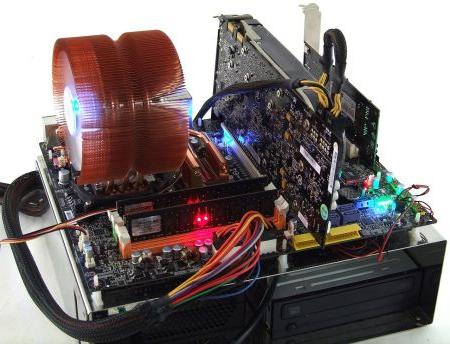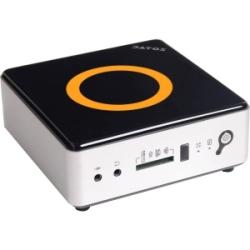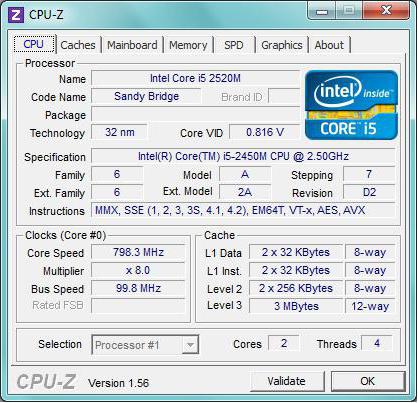Comparison of processors for laptops (AMD and Intel)
In this article we will compareprocessors for laptops from the two leading manufacturers of semiconductor products - Intel and AMD. The products of the first of them are equipped with an improved processor part and have a higher level of performance in this regard. In turn, AMD solutions boast a more productive graphics subsystem.
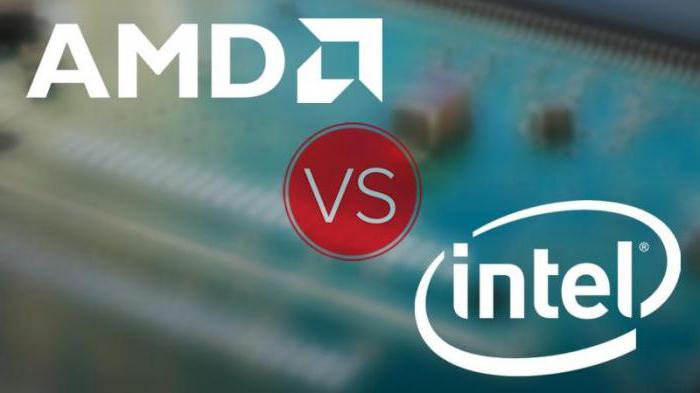
Separation into niches
Comparison of AMD and Intel processors for laptops the most optimal will be done in three niches:
- Processors of a budgetary class (they besides also the most accessible).
- CPUs of the middle level, which combine a high level of speed, and acceptable energy efficiency.
- Chips with the maximum level of performance. In this case, speed, autonomy and energy efficiency are a secondary concern.
If in the first two cases, AMD can providea worthy alternative to "Intel", then here is the premium segment has long been undividedly dominated by the last company. The only hope in this regard for new processor solutions based on the Zen architecture, which AMD should present next year.
Intel products for entry level
Until recently, this niche from Intelproducts of the Atom line. But now the situation has changed and entry-level laptops are now based on Celeron or Pentium processors. The most modest products of this class include only 2 cores, and the most advanced ones are 4. The following models, which are listed in Table 1, are relevant for the 3rd quarter of 2016.
Table 1 - Up-to-date CPU models from Intel for entry-level mobile PCs.
№ п / п | Model Name | Number of cores, pcs. | Process technology, nm | Level 3 cache, MB | Frequencies, GHz | Thermal package, W | Cost of CPA, $ | The model of video card HD Graphics |
1. | Celeron N3350 | 2 | 14 | 2 | 1,1-2,4 | 6 | 107 | 500 |
2. | Celeron N3450 | 4 | 1,1-2,2 | 500 | ||||
3. | Pentium N4200 | 1,1-2,5 | 161 | 505 |
There are some cardinal differences between the datathere are essentially no CPU models. They are aimed at solving the most simple tasks and have a minimum level of performance. Also, this manufacturer of semiconductor solutions has the strongest part of the processor part, but the integrated graphics subsystem is very weak. Another strength of these products is the high degree of energy efficiency and improved autonomy due to this.

Middle-level solutions from Intel
"Kor i3" and "Kor i5" - this is an average levelIntel processors for laptops. Comparison of their characteristics indicates that the first family is closer to the entry-level solutions, and the second - under certain circumstances can compete with the most productive chips of this company. The detailed specifications of the product family are shown in Table 2.
Table 2 - The parameters of the processors from Intel for mid-range laptops.
№ п / п | Model Name | Number of Cores/ logical streams, pcs. | Production technology, nm | Level 3 cache memory, MB | Frequencies, GHz | Power, W | HD Graphics |
1. | i3 - 7100U | 2/4 | 14 | 3 | 2,4 | 15 | 620 |
2. | i5 - 7200U | 3,1 | |||||
3. | i5-7W54 | 4 | 3,2 | 7 | 615 |
Characteristics of this class of CPUs are practicallyidentical. The key difference is improved energy saving in 7U54. As a result, autonomy in this case will also be better. In the rest, there are no significant differences between these processors. The price for all chips of this family is the same - $ 281.
Premium processors for laptops from Intel
Comparison of Intel processors for laptopsthe last generation indicates that the most productive solutions include the CPU family i7. And in architectural terms, they almost do not differ from products of the middle class. Even the video card models are the same in this case. But a higher level of performance in comparison with the middle-class processors is provided by higher clock speeds and increased size of volatile memory of the 3rd level. The main parameters of the chips in this family are shown in Table 3.
Table 3 - The main characteristics of the CPU family i7.
Item No. | Name of the chip | Frequency range, GHz | 3rd level cache, MB | Number of cores and streams, pcs. | Cost, $ | Graphics Adapter HD Graphics, model |
1. | i7 - 7500U | 2,7-3,5 | 4 | 2/4 | 393 | 620 |
2. | i7-7.75 | 1,3-3,6 | 615 |
The difference between these products is that in the second case, energy efficiency is improved, but at the same time, the performance will eventually be lower.

AMD processors for entry-level mobile PCs
Comparison of mobile processors for laptopstwo leading manufacturers of this product indicates that Intel, as noted earlier, is better than the processor part, while AMD has an integrated graphics subsystem. If the new laptop is a priority is the improved video system, it is better to pay attention to the laptops of the second manufacturer. Specific chip models by technical specifications are given in Table 4.
Table 4 - The most recent AMD processors for notebooks of entry level.
№ п / п | Model Name | Frequency range, GHz | Level 2 cache, MB | Thermal package, W | Number of cores, pcs. | Integrated graphics |
1. | E2-9010 | 2,0-2,2 | 1 | 10-15 | 2 | R2 |
2. | A6-9210 | 2,4-2,8 | R4 | |||
3. | A9-9410 | 3,5-2,9 | 10-25 | R5 |
Most of these chips have practicallyidentical technical parameters. The key difference here is only in the frequency range and the integrated integrated accelerator model. It is based on these parameters and you need to make a choice. If you need maximum autonomy, then we choose products with lower performance. If the autonomy comes to the fore, then it is necessary to sacrifice for its sake dynamism.

AMD chips for the organization of mid-range laptops
FX-9XXXP and A1X-9XXXX are the main processorsAMD for laptops. Comparison of their characteristics with the entry-level products indicates that they already have 4 computational units against 2, which are available in entry-level products. Also, the built-in video card in this case can make a worthy competition to discrete entry-level accelerators. But the weak processor part is the factor for today, which significantly reduces the performance of laptops based on these chips. Therefore, you can look in their direction only if the minimum cost of a mobile computer requires the fastest possible graphics subsystem. The main specifications of this family of CPU are shown in Table 5.
Table 5 - CPU parameters from AMD for middle class notebooks.
№ п / п | Marking the CPU | Clock frequency, GHz | Graphic accelerator | Thermal package, W |
1. | FX-9830P | 3,0-3,7 | R7 | 25-45 |
2. | FX-9800P | 2,7-3,6 | R7 | 12-15 |
3. | A12-9730P | 2,8-3,5 | R7 | 25-45 |
4. | A12-9700R | 2,5-3,4 | R7 | 12-15 |
5. | A10-9630P | 2,6-3,3 | R5 | 25-45 |
6. | A10-9600R | 2,4-3,3 | R5 | 12-15 |

Recommended notebook models for each segment
The most difficult to make a comparison of processors forlaptops in the entry-level products segment. On the one hand, Intel solutions in this case have a lower cost and an improved processor part. In turn, AMD offers mobile PCs with an improved graphics subsystem. It is based on the last parameter and it is recommended to buy when choosing an entry-level PC Pavilion 15-AW006UR from HP. Other things being equal with competing solutions, the video card in this case will have a certain performance margin, and the processor does not lose too much CPU from Intel. In the quality of a mid-range mobile PC, it is recommended to choose the Aspire E5 - 774 - 50SY from Acer. He has a chip i5 - 7200U, which is only slightly inferior to flagship products. And he has other technical specifications at an acceptable level, as for a laptop of the middle class. Comparison of processors for laptops in the niche of the most productive solutions indicated that it is best to purchase mobile computers based on i7 chips of the 7th generation. The most affordable, but at the same time very equipped version of the notebook, is the IdeaPad 510-15 IKB from Lenovo. It is recommended to buy it when choosing the most productive mobile PC. At the same time, the price is quite democratic for both this class of devices and the equipment is excellent.
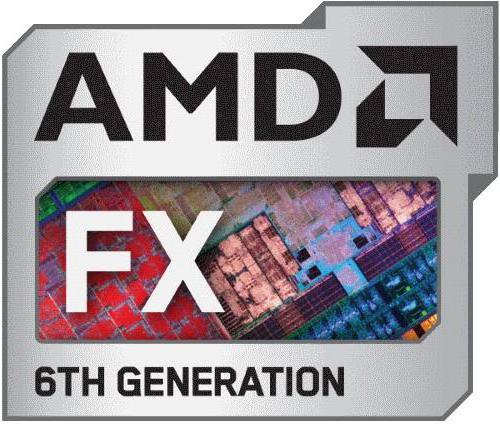
Outcomes
Comparison of processors for laptops of two leadingchip manufacturers to date clearly and clearly indicates that the leading position in most cases is precisely the products from Intel. AMD, in its turn, lags far behind its direct competitor. The only segment of the market where parity is still maintained is the entry-level mobile products, where AMD has a worthy alternative. In all other cases, it's more appropriate to purchase laptops based on the CPU from Intel. The current situation can drastically change the output of processors based on the Zen architecture in 2017. But whether it will be possible for AMD to do it - time will tell. Right now, the right thing to do in the niche of mid-range and premium mobile PCs is to rely on Intel solutions. Although the price they are somewhat overstated, but the level of performance this defect more than compensates.
